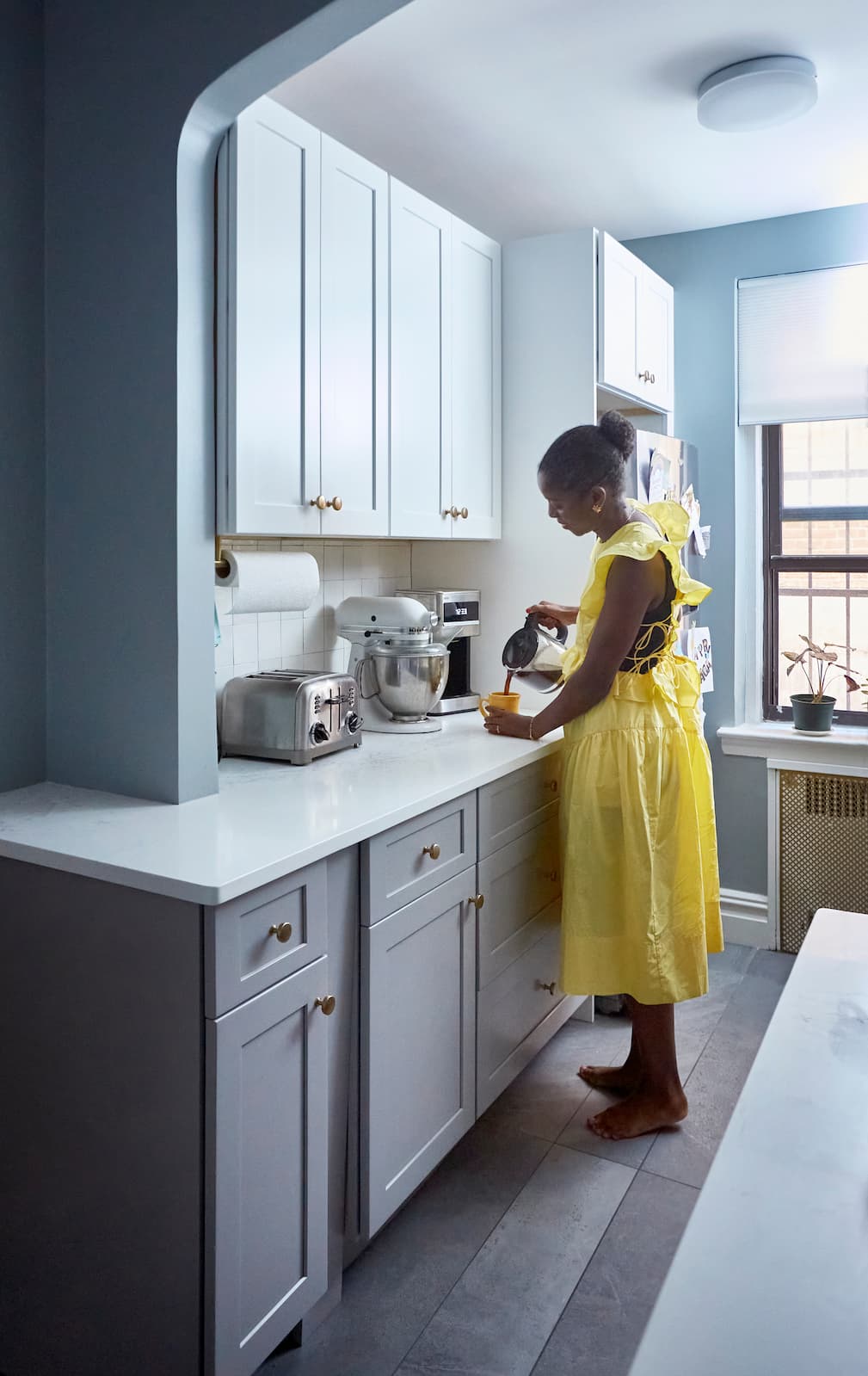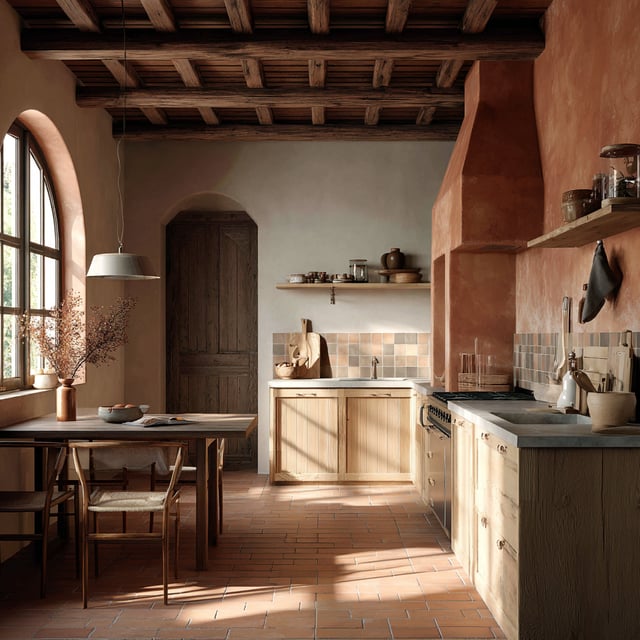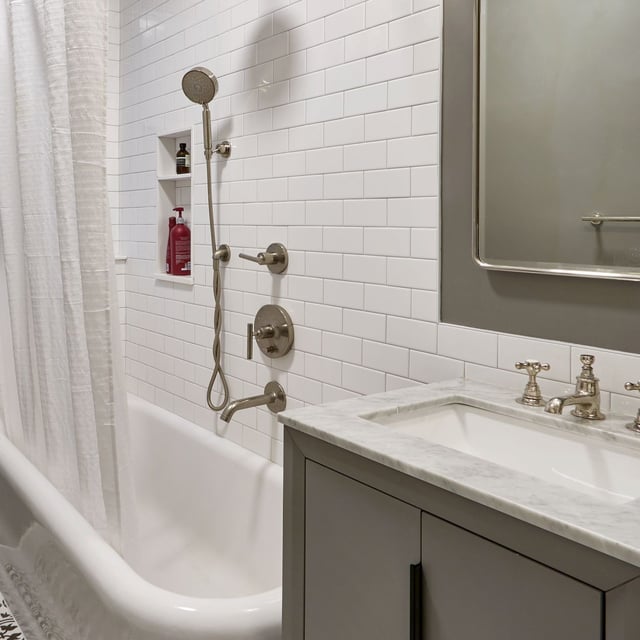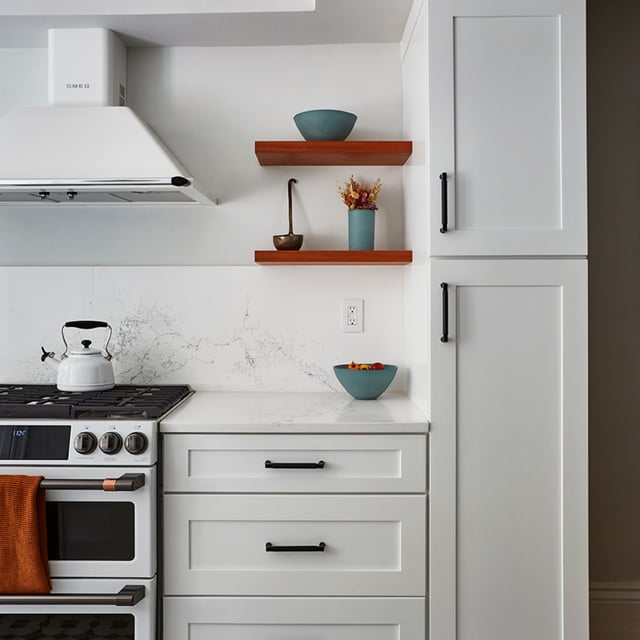
Design
Mid-Century Modern House Remodels & Design Ideas
11.22.2025


In This Article
Wood is one of the most versatile and inviting materials you can bring into your kitchen. Whether you’re drawn to the clean lines of Scandinavian design or the warmth of a rustic farmhouse, wood offers endless possibilities for creating a space that feels both modern and timeless. Natural wood design kitchens are celebrated for their ability to add texture, depth, and a sense of calm—qualities that make the kitchen a true heart of the home.
From wood floors and cabinets to accent walls and open shelving, there are countless ways to incorporate wood into your kitchen design. Below, you’ll find inspiration and practical advice for using wood in every corner of your kitchen, including ideas for kitchens with wood walls, wood countertops, and more.
Design a Home That’s Uniquely Yours
Block can help you achieve your renovation goals and bring your dream remodel to life with price assurance and expert support.
Get Started
Wood flooring brings warmth and character to any kitchen, making the space feel instantly more welcoming. If you love the look of a wood Scandinavian kitchen design, consider wide-plank oak or ash floors in a light, natural finish. These options reflect light and create an airy, open feel that’s perfect for modern homes.
For a more traditional or rustic look, try reclaimed wood or darker stains like walnut or cherry. Herringbone or chevron patterns can add visual interest and a touch of luxury. When choosing wood floors for the kitchen, opt for durable finishes that can handle spills and heavy foot traffic—matte sealants and engineered hardwoods are both excellent choices.
However, wood floors in kitchens do come with some challenges. Kitchens are high-traffic, high-moisture areas, and wood is more sensitive to water and humidity than other flooring options. Spills need to be cleaned up quickly to prevent staining or warping, and regular maintenance—such as cleaning, resealing, or refinishing—is important to keep the floors looking their best. Wood can also be prone to scratches from dropped utensils, dragged chairs, or pet claws, especially if a softer species is chosen. Finally, the cost of high-quality hardwood flooring and professional installation can be higher than other materials, so it’s important to weigh these factors when deciding if wood floors are right for your kitchen.
Tip: Place rugs or runners in high-traffic areas, like in front of the sink or stove, to protect your floors and add a layer of comfort.
 See how this New York kitchen designed with wood
See how this New York kitchen designed with wood
Wood countertops are beautiful and bring a natural, tactile quality to the kitchen. Butcher block is a popular choice, offering a surface that’s both functional and visually striking. Maple, oak, and walnut are common woods for countertops, each with its own unique grain and color.
While wood countertops can be sanded and refinished over time, they do require regular maintenance. Spills should be wiped up quickly, and the surface should be oiled periodically to prevent drying and cracking. Wood is softer than stone, so it can scratch or dent, but many homeowners appreciate the patina that develops with age.
Tip: Consider using wood countertops on an island or breakfast bar, paired with stone or quartz elsewhere, for a balanced look that’s easier to maintain.

Kitchens with wood walls are making a comeback, offering a cozy, textured backdrop that works beautifully in both modern and traditional spaces. Wood brings a sense of warmth and authenticity that’s hard to match with other materials. Shiplap, tongue-and-groove paneling, or even reclaimed barn wood can be used to create an accent wall behind open shelving, the dining area, or as a striking backsplash alternative. These options add visual interest and can help define different zones within an open-plan kitchen.
For a Scandinavian-inspired kitchen, vertical wood slats in a pale, natural finish create a clean, contemporary look that feels both fresh and timeless. This approach works especially well when paired with minimalist cabinetry and plenty of natural light. If you’re looking for something bolder, consider a dark-stained wood wall paired with light cabinets and countertops for dramatic contrast. Mixing wood tones—such as a walnut accent wall with oak floors—can add depth and a custom feel to your kitchen.
Wood isn’t just for walls—incorporating wood into your kitchen ceiling can completely transform the space. Exposed wood beams add architectural character and a sense of history, whether you’re working with original beams or installing new ones for effect. For a more subtle approach, consider a wood plank ceiling in a light finish to brighten the room and draw the eye upward. Even a coffered or tray ceiling with wood insets can add a layer of sophistication and warmth.
Tip: Wood walls and ceilings don’t have to cover an entire room—a single accent wall, backsplash, or a few ceiling beams can add just the right amount of warmth and interest. Pair wood features with light paint colors, stone, or tile to keep the kitchen feeling open and balanced. And remember, sealed or treated wood is best for areas exposed to moisture or heat, ensuring your design stands the test of time.

See how this California kitchen designed with wood
Natural wood cabinets are a hallmark of both classic and modern kitchen design. In a wood Scandinavian kitchen, flat-front cabinets in light oak or birch create a minimalist, calming effect. For a more traditional kitchen, shaker-style cabinets in medium or dark wood add richness and depth.
Mixing wood tones—such as pairing light upper cabinets with darker lowers—can add dimension and keep the space from feeling too uniform. Open shelving in matching or contrasting wood is another way to showcase beautiful grain and craftsmanship.
Tip: Pair natural wood cabinets with simple hardware in matte black, brass, or stainless steel for a look that’s both current and timeless.

Caption: See how this New York kitchen designed with wood
Wood structural elements can become some of the most striking features in a kitchen, adding both visual interest and a sense of history. Exposed wood beams—whether original to the home or newly installed—draw the eye upward and create a feeling of warmth and authenticity. In open-plan kitchens, beams can help define different zones, such as separating the cooking area from the dining or living space. For a Scandinavian or modern rustic look, opt for beams in a pale, natural finish; for a more traditional or industrial vibe, consider darker stains or reclaimed wood.
Wood columns and posts can also serve as subtle room dividers or support open shelving, while still maintaining an open, airy feel. Even smaller architectural details—like wood corbels under countertops, wood-framed doorways, or a wood-clad range hood—can add character and craftsmanship to your kitchen design.
If your kitchen has a high or vaulted ceiling, a coffered or tray ceiling with wood insets can introduce a layer of sophistication and texture. These features not only enhance the architecture but also help absorb sound, making the kitchen more comfortable for gatherings and conversation.
Tip: When adding wood structural elements, coordinate the finish with other wood features in your kitchen for a cohesive look. Sealed or treated wood is best for areas exposed to moisture or heat, ensuring your design remains beautiful and durable for years to come.
 See how this New York kitchen designed with wood
See how this New York kitchen designed with wood
Wood isn’t just for floors, cabinets, or walls. There are plenty of creative ways to bring wood into your kitchen:
Tip: Mix wood with other natural materials—like stone, metal, or glass—for a layered, inviting look. Combining with crisp white cabinets, walls, and countertops can make wood accents truly pop.
 See how this New York ktichen designed with wood
See how this New York ktichen designed with wood
Renovate with confidence every step of the way
Step 1: Personalize Your Renovation Plan
Step 2: Receive Quotes from Trusted Contractors
Step 3: Let Us Handle the Project Details

Ready to create a kitchen that feels warm, welcoming, and uniquely yours? Block Renovation connects you with experienced contractors and designers who understand how to work with wood and other natural materials. From Scandinavian-inspired kitchens to bold, contemporary spaces, our team can help you plan, visualize, and build a kitchen that fits your style and your life. Start your renovation journey with Block and bring your wood kitchen ideas to life—beautifully and confidently.

Written by Block Renovation

Renovate confidently with Block
Easily compare quotes from top quality contractors, and get peace of mind with warranty & price protections.
Thousands of homeowners have renovated with Block

4.5 Stars (100+)

4.7 Stars (100+)

4.5 Stars (75+)

Design
Mid-Century Modern House Remodels & Design Ideas
11.22.2025

Design
Cape Cod Remodeling Ideas & How-Tos
11.15.2025

Design
Modern Tuscan Style Kitchens to Inspire Your Next Redesign
10.23.2025

Design
Vintage Bathroom Remodels - Balancing Retro & Modern Design
09.18.2025

Design
Bringing Wood Elements Into the Kitchen: Walls, Countertops & More Ideas
09.05.2025
Renovate confidently